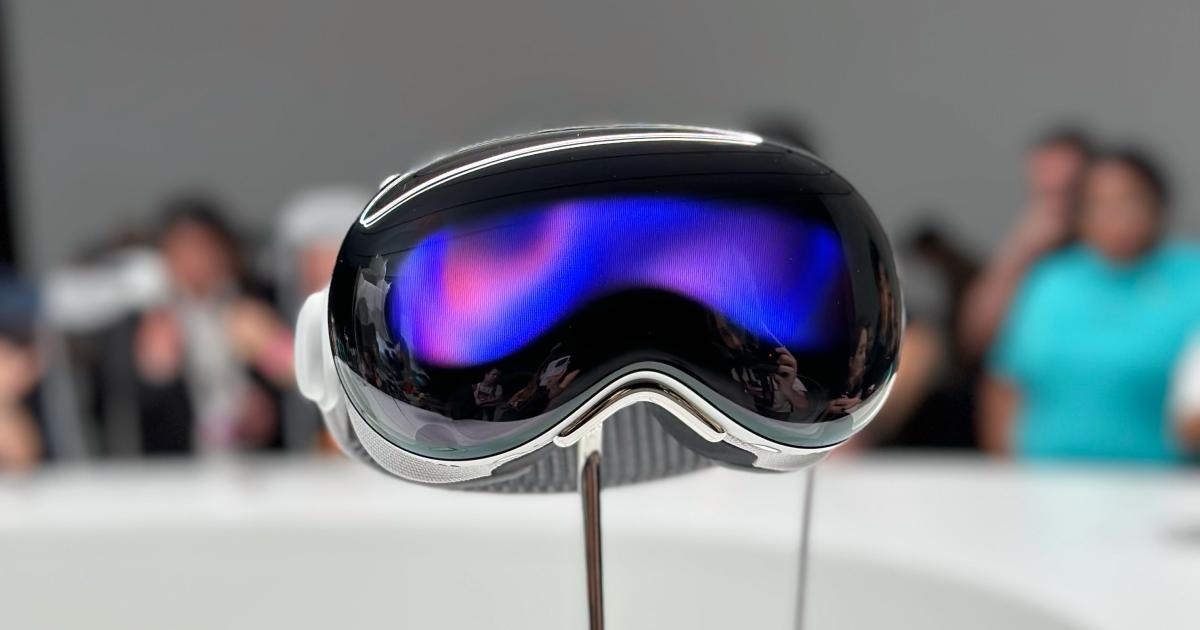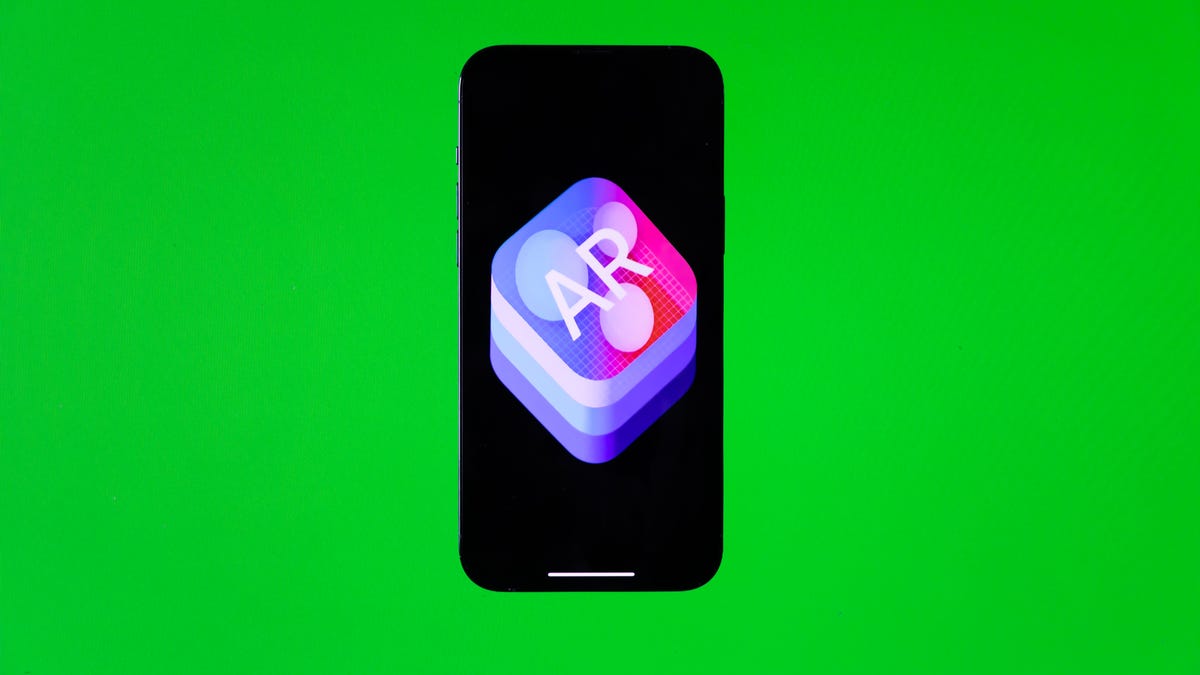
“Wow, wow, wow. Bellissimo.” That was the first thing I heard from one excited WWDC attendee as I waited to test Apple’s Vision Pro mixed reality headset. That level is excitement is exactly what Apple is hoping for. Realistically, not everyone will be able to afford a $3,499 device. But if Apple can get mainstream consumers excited about the idea of spatial computing, then it’ll be able to make a bigger splash when it inevitably unveils a more affordable follow-up.
After spending thirty minutes with the Vision Pro, my reaction is more tempered than that excitable attendee. It’s undoubtedly the best mixed reality (VR/AR) experience I’ve had yet, delivering an unparalleled sense of immersion, displays sharp enough to read text on websites, and an intuitive gesture-based user interface. And yet… it’s still ultimately a VR headset, with many of the issues endemic to the entire category.
But let’s start at the beginning: Before I was anywhere near the Vision Pro, I had to jump through a few setup hoops on an iPhone. First I rotated my head around to map my face, then I gave the phone a full view of my ears for it to personalize the headset’s spatial audio. I hopped into another room, took off my glasses, and an Apple representative used a machine to detect my prescription. The Vision Pro can’t be used with glasses, so anyone who needs vision correction will have to order additional lenses.
After a few minutes of admiring Apple’s meticulously designed corporate campus, I entered a room to see the Vision Pro in action. It looked even more impressive than when I first caught a glimpse of it in the morning, but that’s probably because I didn’t have to fight off desperate Apple media at the same time. I slipped it on like any other VR headset: I held the front lenses in my left hand, pulled the rear headstrap back a bit, and gently guided the device over my head.
Gallery: Apple Vision Pro first look | 4 Photos
Gallery: Apple Vision Pro first look | 4 Photos
The Vision Pro’s stretchy rear headband felt better on my noggin than any of Meta’s VR devices, but the headset still placed a bit of pressure against my eyes and around my nose once I securely tightened it with a rear dial. The prototype unit also had a velcro strap going over my head, just like the Meta Quest. That’s not visible on any of Apple’s promotional materials, but the company tells me that the headset’s modular design supports additional straps if necessary.
Even without the overhead strap, though, I’d wager the Vision Pro would still feel noticeable against your eyes. You probably won’t forgot you’re wearing it, which would ultimately cut into its sense of immersion.
But I’ll admit, I mostly forgot about that slight discomfort once I saw the Vision Pro in action. When the screen lit up, I was confronted with the same posh meeting room I initially entered, except this time I could also see an array of app icons hovering in front of me. Thanks to the headset’s high-resolution front cameras, I had a clear view of my surroundings, along with the Apple representatives guiding my demo. It wasn’t a perfect representation of reality, but it was better than any VR or AR product I’ve seen yet.
After a bit of eye tracking training, which involved following dots moving around the screen with just my eyes, it also felt like I gained a superpower. A mere glance at an app icon, or a specific menu or button, would instantly highlight it. Then I learned two key gestures, a finger pinch for selecting things, and a pinch-slide motion for scrolling up/down, or left/right. Unlike the Quest, you can also make those hand gestures comfortable on your lap, you don’t have to hold your hands up like an amateur symphony conductor.
It may be a cliche to say this, but after just a few seconds of learning those gestures, I felt like Tom Cruise in Minority Report. A glance and a pinch is all it took for me to open up apps and breeze through the interface. I also figured out a flick and pinch motion could quickly scroll through websites, a genuinely intuitive gesture that simply felt delightful. After years of living with touchscreen interfaces on iOS and iPadOS, I don’t think anyone is going to have trouble learning how to use the Vision Pro.
With the basics down, I was ready to experience the Vision Pro’s most wondrous bits of hardware: Its dual 4K micro-OLED displays. They look sharper than any screen I’ve seen before, be it a VR headset or a TV. Photos look incredibly crisp, especially panoramic pictures, which completely fill your entire field of vision. And 3D videos shot with the Vision Pro’s front cameras look eerily lifelike — almost as if you were replaying a perfectly captured memory.
I was most impressed with how the Vision Pro handled a 3D clip of Avatar: The Way of Water. The movie looked crisp and clear with all of the 3D depth I remembered from the theater. At times, the 3D looked even better than in cinemas, since I didn’t have to reduce the brightness of the film with shaded 3D glasses. Apple wouldn’t confirm if the Vision Pro could play The Way of Water in in a 48fps high frame rate — the film initially swapped between 24fps and 48fps footage in theaters — but even without that capability, it’s something I’d still prefer to watch on headset instead of a 2D 4K TV.
Apple
Like other VR headsets, you can also hop into a virtual cinema to watch videos. By default, that mode puts you in the middle of a theater, but as a dedicated front row sitter, it wasn’t nearly close enough for me. (Fight me, I don’t care.) Thankfully, the Vision Pro gives you options: I was able to virtually move much closer to the screen, while back row weirdos can also create that experience. Seeing Avatar: The Way of Water projected in clear 3D, at a size close to my local multiplex, felt miraculous. Just imagine slipping this thing on during a long flight and having a movie marathon.
The Vision Pro’s side speakers also do a great job of recreating cinematic spatial sound. Since they’re basically just tiny speakers, though, other people can also hear them. For a truly private experience, you’ll have to slip in a pair of AirPods or AirPods Max.





